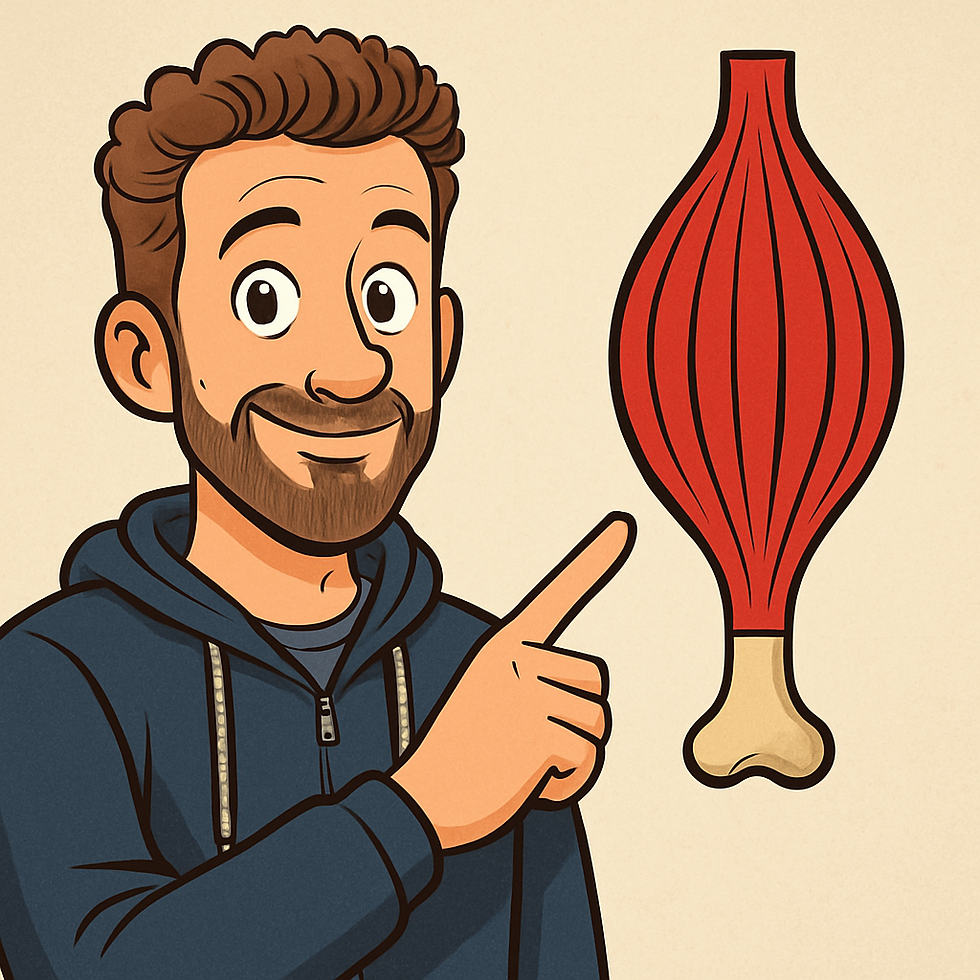Accelerating Athletic Recovery (The Real Key Most Athletes Miss)
- Michael Lingenfelter

- 2 minutes ago
- 3 min read

Whether you’re lifting weights, running, golfing, cycling, or playing pickleball — your ability to recover quickly determines how long you stay in the game.
Most athletes think recovery is about:
stretching
massage
ice
rest
supplements
“listening to your body”
These can help.
But they don’t address the number one factor that actually determines how fast you heal:

⭐️ Your muscle function.
Not flexibility.
Not mobility drills.
Not foam rolling.
How well your muscles stabilize the joints you’re asking them to control.
Why Muscle Function Drives Recovery
When stabilizer muscles weaken or shut down (a process called inhibition), your body immediately compensates.
You’ll notice:
tightness that keeps coming back
a stiff back after sitting
hip tension that won’t release
“pinchy” rotation in your golf swing
aches that show up 24–48 hours after activity
slow healing from workouts you used to tolerate
This isn’t aging.
It’s your body protecting itself.
If a stabilizer can’t do its job, your body locks down surrounding tissues to prevent injury. That protective tension feels like:
tight hamstrings
stiff hips
tight neck
lower back pressure
reduced range of motion
Many athletes try to stretch or massage this away, but tightness is a symptom, not the cause.
The Real Fix: Restore Stability First
When we restore the muscles responsible for stabilizing a joint, recovery accelerates dramatically.
You’ll notice:
stiffness drops
soreness decreases
your movement feels “lighter”
recovery windows shrink
performance improves
confidence in your body returns
This is why Muscle Activation Techniques (MAT) is used by professional athletes — golfers, NFL players, NBA players, Olympic athletes — to stay healthy, train harder, and recover faster.
Because when stabilizers fire correctly, you:
absorb force better
produce force more efficiently
tolerate training loads
avoid inflammation-based flare-ups
repeat workouts without breaking down
A Real Example (Golfer From China Who Couldn’t Hold the Club When Swinging Harder)
A female golfer visiting from China came to see me because every time she tried to swing harder, she actually lost control of the club. Her hands would give out, she’d lose grip pressure, and the clubface became inconsistent.
When we assessed her movement, the problem became clear:
She had very limited spinal rotation
Her hip internal rotation was restricted on both sides
Without enough rotation from her spine and hips, her body was forcing her arms and hands to generate all the power. That overload made it feel like she couldn’t hold the club at higher speeds.
Once we restored her rotational stabilizers through MAT — especially spinal rotation and hip rotation — she immediately gained:
smoother rotation
better sequencing
more stability through her trunk
the ability to hold the club firmly even when increasing speed
Her reaction was simple:
“I finally feel connected to the club again.”
Better rotation → better control → better speed → better recovery.
Why Recovery Problems Show Up 24–48 Hours Later

Many athletes feel great during the workout.
The problem shows up the next morning.
Here’s why:
During activity:
Your nervous system dumps natural painkillers (endorphins), masking weakness.
24–48 hours later:
Your body reveals whether it had enough stability to handle the load.
If certain muscles were inhibited, the body tightens the system to protect you.
This delayed response is the “I feel it the next day” pattern so many people deal with.
3 Ways to Accelerate Your Recovery This Week

1. Strengthen Your Weak Link
Find where you’re losing stability — not where you feel tightness.
If your hip feels tight, try some light isometrics for that area as well as the joints above and below it (hip and spine). I can send you the exact isometrics to use.
If your back feels tight, test your spinal rotation and extension, and then add gentle isometrics for the back and the joints above or below it. I can send you those isos too.
2. Stop Stretching Through Pain
If a stretch triggers tightness later, your body is protecting you.
Strengthen before you stretch.
3. Track the 24–48 Hour Rule
After your next workout, pay attention to tomorrow — not today.
Your recovery window tells you exactly where the problem is.
If You’re In Visalia or Tulare County

This approach is what I do every day with athletes, golfers, runners, and active adults.
It’s simple:
1. Identify the inhibited stabilizers
2. Reactivate them
3. Strengthen the pattern
4. Watch recovery accelerate
If you want help identifying your weak link, message me “RECOVERY” and I’ll send next steps.

Comments